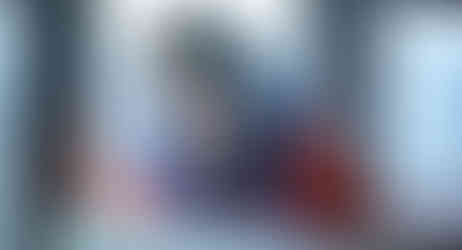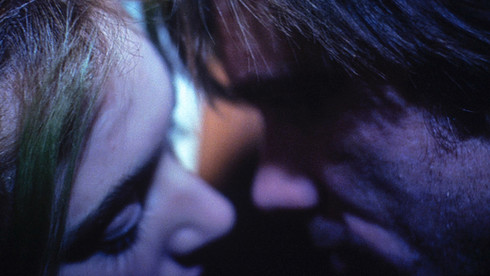Still challenging and thought-provoking, ‘Eternal Sunshine’ looks great, too
- Craig Shapiro
- Aug 9, 2022
- 5 min read
4K ULTRA HD REVIEW / HDR FRAME SHOTS
Kate Winslet stars as the free spirit Clementine Kruczynski and Jim Carrey as emotionally withdrawn Joel Barish. For two years they were lovers, but after a bad breakup, they’ve had their romantic memories erased.
(Click an image to scroll the larger versions)
“ETERNAL SUNSHINE OF THE SPOTLESS MIND”
4K Ultra HD and Blu-ray, 2004, R for language, some drug and sexual content
Best extra: “Memory Light,” a new interview with cinematographer Ellen Kuras
MOST DIRECTORS use marks—typically pieces of colored tape arrayed on the floor—to show their cast where they should be when the cameras roll. Michel Gondry has a different vision. Except for one brief shot, Gondry (“The Science of Sleep,” 2006) winged it. In some takes, someone might be sitting, then standing or moving around in the retake. It was the same for the guys operating the two handheld cameras that were used exclusively to make the movie. Whispering into a small mic, Gondry told them where to move as they were shooting, creating a kind of spontaneous choreography with the actors. “The general atmosphere was, ‘Let’s try it out,’” Kate Winslet (“Titanic,” 1997), a Best Actress Oscar nominee as the impetuous Clementine Kruczynski, says in a conversation with Gondry. “Everything was spontaneous and fresh on every take.” Had it been made any other way, “Eternal Sunshine of the Spotless Mind” wouldn’t still be so original and thought-provoking today. It’s about memory, and when the end credits roll, you’ll likely ask: a) Did it happen? b) Will it happen? c) Is it all in Joel’s mind?
(1-3) Joel wakes up for another day’s commute, but he ditches work and ends up at the Montauk beach on Long Island. (4&5) On the train from Montauk, he meets Clementine but there seems to be a distance deja vu. (6&7) The next night they end up at a frozen lake taking in the stars till daybreak.
Playing against type, Jim Carrey gives the performance of his career as Joel Barish, who’s as reserved as Clementine is impulsive. (“The Truman Show,” 1998, is a close second.) Tying it all together is the fantastic, Oscar-winning script by Charlie Kaufman, who had poked around in people’s heads before. It you haven’t seen “Being John Malkovich” (1995), put it on your list. “Charlie Kaufman’s scripts are as close to perfect as you can get,” Carrey says in a separate conversation with Gondry, “yet there was room within this one [to draw on] our relationships and my memories of childhood.” According to IMBD.com, much of the dialogue between Carrey and Winslet came from videotaped rehearsals, during which they became close by sharing their real-life relationships and heartbreaks.
Joel and Clementine have recently broken up, but when he runs into her at a bookstore, she acts like she doesn’t know him. That’s because she doesn’t: She’s undergone a procedure developed by Dr. Mierzwiak (Tom Wilkinson, “Michael Clayton,” 2007) that wiped Joel from her mind. Angry and hurt, Joel decides to do the same—until, during the process, he realizes that memories are all he, all that anyone, has. They aren’t files to be deleted; good or bad, they make us who we are. Joel frantically tries to hide them from Mierzwiak’s assistants Stan (Mark Ruffalo, “Spotlight,” 2015) and Patrick (Elijah Wood, “The Lord of the Rings” trilogy, 2001-03). There are other complications. Patrick is stealing Joel’s memories to pursue Clementine and Mierzwiak’s receptionist Mary (Kirsten Dunst, “The Power of the Dog,” 2021) finds out that he subjected her to the procedure to blot out their affair.
(1) Joel prepares for his first memory-erase session with Dr. Mierzwiak at the New York City Lacuna, Inc. office. (2) Kirsten Dunst plays Dr. Mierzwiak’s front desk receptionist Mary. (3&4) Left, Dr. Mierzwiak played by British actor Tom Wilkinson and assistant Stan played by Mark Ruffalo perform Joel’s first memory erase, in which he finds himself in a supersize kitchen sink. (4) Mierzwiak’s assistant Patrick played by Elijah Wood is stealing Joel’s memories to pursue Clementine. (5) While Joel has his second memory erase session at his apartment, Mary and Stan have an encounter.
VIDEO/AUDIO
Kino Lorber and Universal Studios have given “Eternal Sunshine” (1.85:1 aspect ratio) a new 4K master, but what’s the source – the original 35mm camera negative or from its 2004 theatrical 2K digital intermediate? The overall clarity points towards the 2K DI, since its on-screen detail doesn’t match Kino Lorber’s highly praised 4K releases of “Out of Sight,” “Heat of the Night,” “Some Like it Hot,” “Invasion of the Body Snatchers” and “Hard Target” – all with the same aspect ratio and all mastered in 4K from the camera negative.
The HDR10 and Dolby Vision color-grading was handled by cinematographer Ellen Kuras. But despite what the title might imply, it’s not a sunny movie. The picture is cool and deliberately murk, which suits the story’s tone. Even with the filtered lighting, detail in most cases is very good. The maximum peak brightness does hit 1090 nits, while the average light level is 206 nits, coded onto a three-layer 100-gigabit disc. Plus, the video bitrate averages a much favorited 80 megabits per second. Grain is also consistent and the new master is stable and clean.
This is easily the best it’s looked outside of a theater. The lossless DTS-HD 5.1 Master Audio track deftly balances the dialogue and Jon Brion’s (“Magnolia,” 1999) wonderful score. Joel’s narration at the beginning seems to emanate from within your head, and if Stan and Patrick’s mostly improvised conversation sounds dreamy as they chase his memories, it’s because that’s how Joel perceives it. Brion gets inside your head with harps and bells and tracks by Beck, The Polyphonic Spree and garage rockers The Willowz.
EXTRAS The only new extra is “Memory Light,” an engrossing interview with Kuras, who says Kaufman’s script fanned her interest in experimental filmmaking while her experience making documentaries (she shared an Oscar nomination for “The Betrayal,” 2008) helped determine how she would shoot “Eternal Sunshine.” “Conceptually, when you’re in someone’s mind, you can go anywhere and do anything,” Kuras says. She and Gondry wanted the film to look organic, so they decided to use two handheld cameras and keep them constantly moving. And if the cameraman over-panned, that was OK. Memory isn’t smooth and linear, it’s fitful and fragmentary. Kuras also applied paint around the edges of her lenses to give Joel’s memories a tunnel-like effect. The idea was to make the cinematography part of the story, and that’s just what she achieved. Other bonuses, all of them from an earlier Blu-ray release, include the conversations with Carrey and Winslet, a chummy Gondry-Kaufman commentary (4K & Blu-ray) that is short on revelations, a behind-the-scenes feature, another feature about Gondry, and deleted and extended scenes. Now, about the three questions posed earlier. Cue up “Eternal Sunshine” and decide for yourself. There’s plenty here to consider. — Craig Shapiro
Joel’s final memory erase


















































Thank's for these great 4k reviews can you do more like Child's Play new 4K and others.